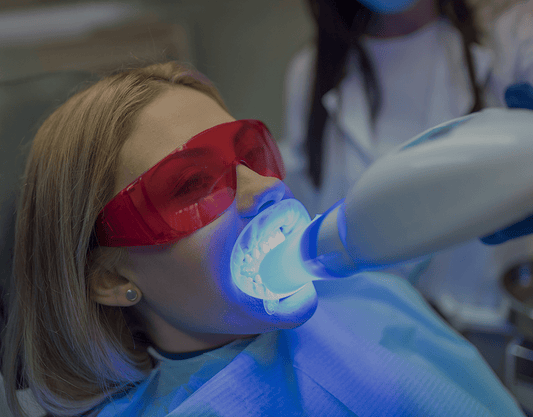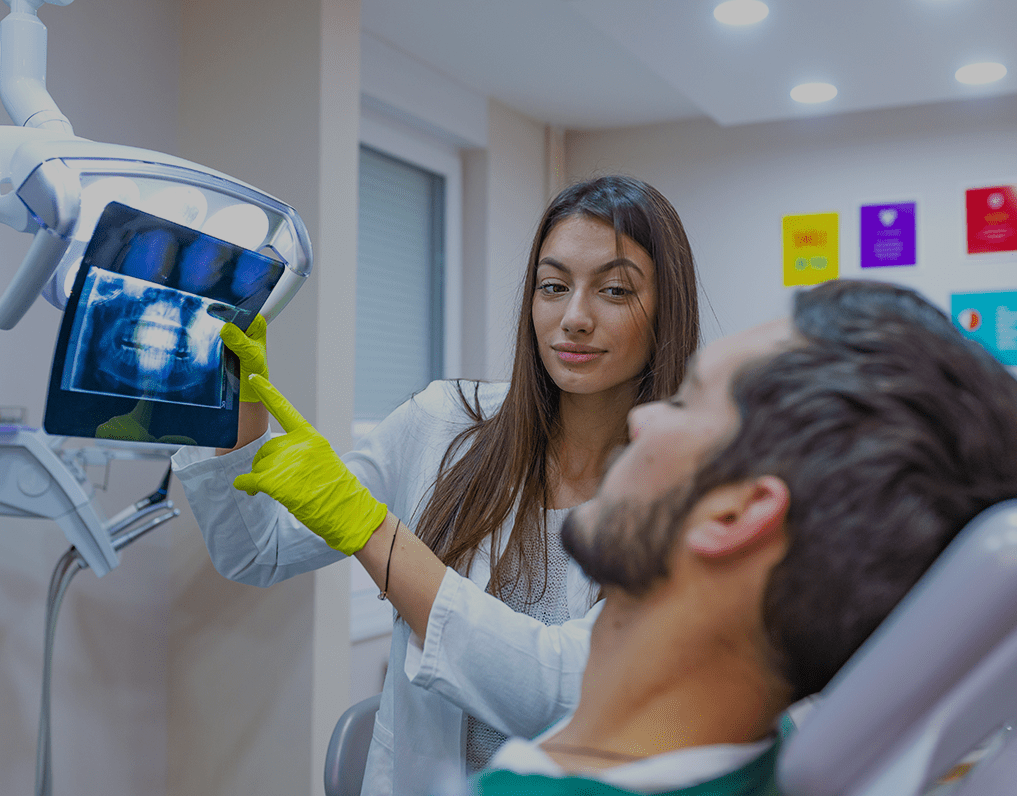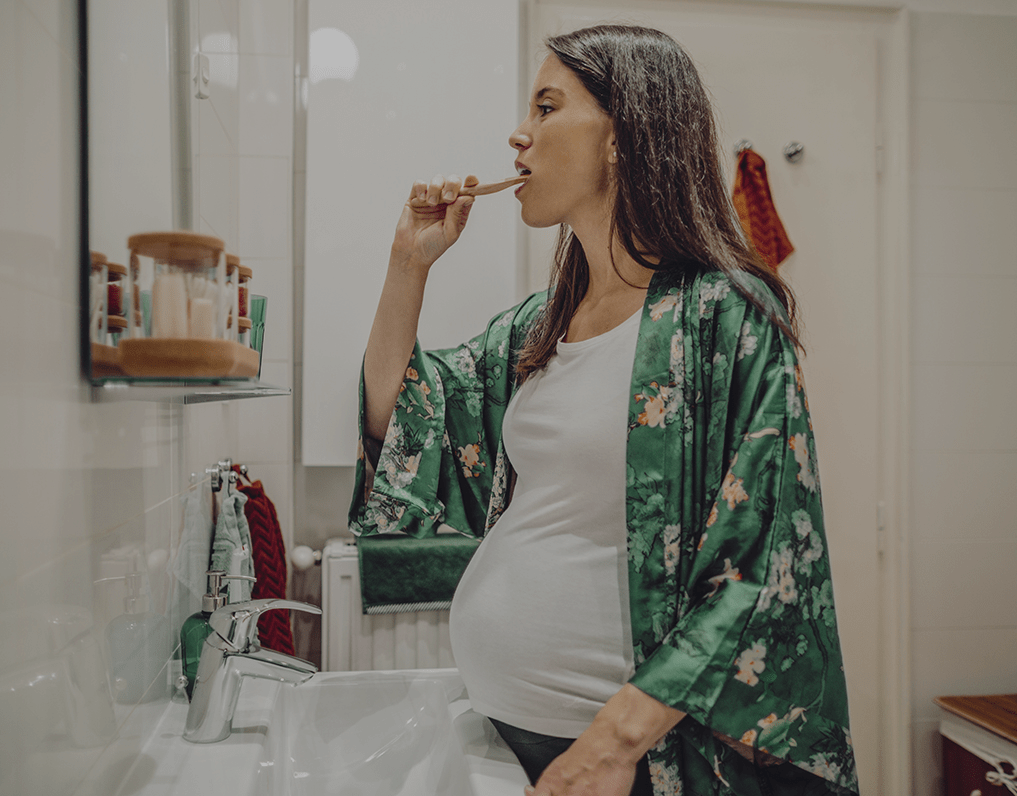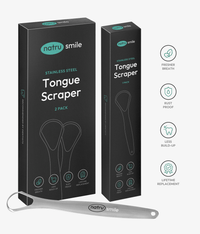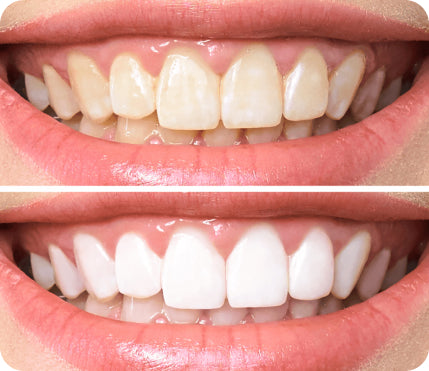
All products are certified by dental expert Dr. Greg Grillo
Teeth whitening has gained popularity as a means to improve your smile. Achieving a bright, white smile is a common goal among people nowadays, and some 45 million Americans have whitened their teeth professionally.
That being said, one treatment that has gained attention in recent years is UV teeth whitening, which uses ultraviolet (UV) light to enhance the whitening process.
The safety of UV teeth whitening has been a topic of debate among dental professionals and consumers alike. While some studies suggest that the procedure is safe when done correctly, others raise concerns about potential side effects, such as tooth sensitivity, gum irritation, and enamel damage.
In this comprehensive guide, let’s explore the safety, effectiveness, and costs associated with UV teeth whitening, as well as how it compares to other teeth whitening options.
How UV Teeth Whitening Works: An Overview
UV teeth whitening is a type of cosmetic dental treatment that uses ultraviolet light to accelerate the whitening process. The procedure typically involves applying hydrogen peroxide or carbamide peroxide gel to the teeth, which are then exposed to UV light. The UV light activates the whitening agent in the gel, breaking down stains and discoloration on the tooth surface more quickly than with traditional whitening methods.
Compared to other teeth whitening methods, such as over-the-counter strips and trays or professional in-office treatments without UV light, the UV light-enhanced process is believed to produce faster, more dramatic results.
However, it's worth noting that the long-term effectiveness and safety of UV teeth whitening are still being studied, and more research is needed to fully understand its pros and cons.
How To Use UV light For Teeth Whitening
Do you wish to achieve a brighter, more confident smile? UV teeth whitening might be the solution you've been searching for.
When it comes to using a UV light for teeth whitening, there are two main options: in-office treatments performed by a dental professional and as an at-home teeth whitening procedure.
In-office UV teeth whitening and at-home UV teeth whitening kits both promise to brighten your smile, but there are significant differences between the two methods.
Here's a step-by-step guide on how each method works:
In-Office UV Teeth Whitening
In-office UV teeth whitening is a professional treatment that delivers fast and dramatic results, typically in just one visit. The procedure is performed by a dental professional, ensuring that it is safe and effective.
-
Consultation - Before undergoing a UV teeth whitening treatment, you'll need to have a consultation with your dentist to determine if you're a good candidate for the procedure. This may involve a dental examination and a discussion about your oral health history and whitening goals.
-
Preparation - The dentist will clean your teeth to remove any plaque or debris and may apply a protective barrier to your gums to minimize irritation from the whitening gel.
-
Application - The dentist will apply hydrogen peroxide or carbamide peroxide gel to your teeth. The exact concentration of the whitening agent may vary depending on your specific needs and the dentist's recommendations.
-
UV light exposure - A UV light device is positioned over your teeth, and the light is activated for a predetermined amount of time, typically between 15 and 45 minutes. The UV light helps accelerate the whitening process by breaking down the stains and discoloration on your teeth more quickly than the gel alone.
- Rinse and repeat - After the UV light exposure, the dentist will remove the whitening gel and rinse your teeth. Depending on your desired results and the severity of your staining, the process may be repeated one or more times during the same appointment.
At-Home UV Teeth Whitening Kits
On the other hand, at-home UV teeth whitening kits offer convenience and affordability, allowing you to whiten your teeth in the comfort of your own home. However, the results may take longer and be less dramatic than in-office whitening treatments.
-
Choose a kit - Purchase a reputable at-home UV teeth whitening kit, preferably one that has been approved by dental professionals or organizations. Look for kits that include a whitening gel, a UV light device, and detailed instructions on how to use the system properly.
-
Preparation - Brush and floss your teeth to remove any plaque or debris. Some kits may also include a protective gum barrier or require you to mold a custom-fit tray to hold the whitening gel in place.
-
Application - Apply the whitening gel to your teeth, either directly or using a tray, as instructed by the kit's guidelines.
-
UV light exposure - Position the UV light device over your teeth and activate the light for the recommended amount of time, usually between 10 and 30 minutes.
- Rinse and repeat - After the UV light exposure, remove the whitening gel and rinse your teeth. Follow the kit's instructions on how often to repeat the process for optimal results.
When using a UV teeth whitening kit at home, it's crucial to follow the manufacturer's instructions carefully and consult with your dentist if you have any concerns or questions about the process.
Safety Of UV Teeth Whitening Kits
For the most part, teeth whitening is safe and effective. But as with any at-home dental treatment, the safety of UV teeth whitening kits depends largely on the quality of the product and how well the user follows the instructions.
When choosing a kit, look for one that has been endorsed by dental professionals, as this can help ensure that the product meets certain safety and effectiveness standards.
When using a UV teeth whitening kit, there are several precautions you should take to minimize potential side effects:
-
Don't overuse the kit - Follow the manufacturer's guidelines on how often and for how long the kit should be used. Overusing the product can increase the risk of tooth sensitivity, gum irritation, and enamel damage.
-
Avoid swallowing the gel - Although most whitening gels contain relatively low concentrations of hydrogen peroxide or carbamide peroxide, swallowing the product can still cause irritation to your digestive system. Try to minimize the amount of gel that comes into contact with your tongue and throat, and rinse your mouth thoroughly after each treatment.
- Take care of your gums - Some people may experience gum irritation from the whitening gel or UV light exposure. To protect your gums, look for kits that include a protective gum barrier, or consider using a custom-fit tray to hold the gel in place and minimize contact with your gum tissue.
If you experience any persistent or severe side effects from using a UV teeth whitening kit, stop using the product and consult with your dentist.
The Benefits Of UV Teeth Whitening
There are several potential benefits to using UV teeth whitening as opposed to other whitening methods:
-
Faster results - The acceleration of the whitening process by UV light means that you may see noticeable results in a shorter amount of time compared to traditional whitening methods. This can make UV teeth whitening an attractive option for those looking for a quick improvement in their smile's appearance.
-
Long-lasting effects - Some studies have suggested that the results of UV teeth whitening may last longer than other methods due to the more intensive treatment process. However, it's important to maintain good oral hygiene and limit exposure to staining substances, such as coffee or tobacco, to keep your teeth looking their whitest.
- Professional-level whitening - In-office UV teeth whitening treatments, in particular, can provide professional-level results that may be difficult to achieve with over-the-counter products. Many people find that this level of whitening significantly improves their overall smile appearance.
UV teeth whitening is a safe, effective, and convenient way to achieve a brighter, more confident smile. Not only does it remove stubborn stains and discoloration, but it can also boost your overall self-esteem.
Possible Side Effects Of UV Teeth Whitening
While UV teeth whitening can offer impressive results, it's important to be aware of the potential side effects that may accompany the treatment:
-
Sensitivity - Tooth sensitivity is a common side effect of teeth whitening, as the whitening agents can temporarily expose the tooth's inner dentin layer. This can make the teeth more susceptible to temperature changes and pressure, leading to discomfort or pain. Sensitivity is typically temporary and should subside within a few days of completing the whitening treatment.
-
Gum irritation - The whitening gel and UV light exposure can cause irritation to the gums, particularly if the gel comes into direct contact with the gum tissue. Using a protective gum barrier or custom-fit tray can help minimize this risk.
- Enamel damage - There is some concern that the intense whitening process associated with UV teeth whitening may cause damage to the tooth enamel over time. While more research is needed to fully understand this risk, it's essential to follow the recommended guidelines for using UV teeth whitening treatments and consult with your dentist if you have any concerns.
By following proper precautions and seeking guidance from a dental professional, you can minimize the risk of experiencing these side effects.
UV Teeth Whitening Cost
The cost of UV teeth whitening can vary significantly depending on the method used and the location of the treatment. In-office treatments performed by a dental professional typically range from $400 to $1,000, while at-home kits can cost anywhere from $50 to $200.
Several factors can affect the cost of UV teeth whitening treatments, including the concentration of the whitening agent used, the number of sessions required to achieve the desired results, and the dentist's expertise and location.
While UV teeth whitening can be more expensive than other methods, such as over-the-counter strips and trays, many people find that the faster, more dramatic results are worth the investment.
How Long Does It Take To Whiten Your Teeth With UV Light?
The teeth whitening duration of individual UV teeth whitening sessions and the number of sessions required to achieve the desired results can vary depending on the method used, the severity of staining, and the patient's individual needs.
In-office UV teeth whitening treatments typically last between 45 and 90 minutes per session, with one to three sessions often required to reach optimal results. Some dentists may also recommend a follow-up appointment to evaluate the treatment's effectiveness and determine if additional sessions are needed.
At-home teeth whitening kits generally involve shorter treatment times, with most sessions lasting between 10 and 30 minutes. The number of sessions required will depend on the kit's instructions and the desired level of whitening.
Some kits recommend daily treatments for a set period, such as one or two weeks, while others may suggest using the product every few days or once a week for several weeks.
In both cases, it's important to follow the recommended guidelines for treatment duration and frequency to minimize the risk of side effects and ensure the best possible results.
Is UV light Safe For Enamels?
One concern with UV teeth whitening is the potential for enamel damage due to the intensity of the treatment process.
While more research is needed to fully understand the long-term effects of UV teeth whitening on tooth enamel, some studies have suggested that the procedure can cause temporary changes in the enamel's structure and appearance.
To minimize the risk of enamel damage, it's essential to follow the recommended guidelines for treatment duration and frequency and consult with your dentist if you have any concerns.
Additionally, maintaining good oral hygiene and strengthening your enamel through the use of fluoride toothpaste and a healthy diet can help protect your teeth from potential damage.
Is There A Link Between UV Light Teeth Whitening And Cancer?
The potential link between UV light teeth whitening and cancer is a topic of concern for some people, as UV light exposure is known to increase the risk of skin cancer.
However, the UV light used in teeth whitening treatments is generally much lower in intensity than sunlight or tanning beds, and the exposure is limited to brief, controlled periods during the treatment process.
While more research is needed to fully understand the potential risks associated with UV teeth whitening, current evidence suggests that the procedure is unlikely to significantly increase the risk of cancer when performed correctly by a qualified dental professional or using a reputable at-home kit.
How Often Should You Do UV Teeth Whitening?
The recommended frequency of UV teeth whitening sessions will depend on the method used, the severity of staining, and the patient's individual needs.
In general, in-office treatments may be repeated every six months to one year, while at-home kits may be used more frequently, depending on the product's instructions and the desired level of whitening.
To maintain the results of your UV teeth whitening treatment, it's essential to practice good oral hygiene, including regular brushing and flossing, and limit exposure to staining substances, such as coffee, tea, red wine, and tobacco.
Regular dental check-ups and cleanings can also help keep your teeth looking their whitest and healthiest.
Wrapping Up
In conclusion, UV teeth whitening can be an effective and efficient way to improve the appearance of your smile by removing stains and discoloration.
While there are potential side effects and concerns associated with the procedure, most people can safely undergo UV teeth whitening when performed by a qualified dental professional or using a reputable at-home teeth whitening kit.
Before deciding on UV teeth whitening, it's essential to consult with your dentist to determine if it's the right option for you and to take the necessary precautions to minimize potential side effects.
By following the recommended guidelines for treatment duration and frequency, maintaining good oral hygiene, and seeking professional guidance when needed, you can enjoy the benefits of white teeth with UV teeth whitening.

